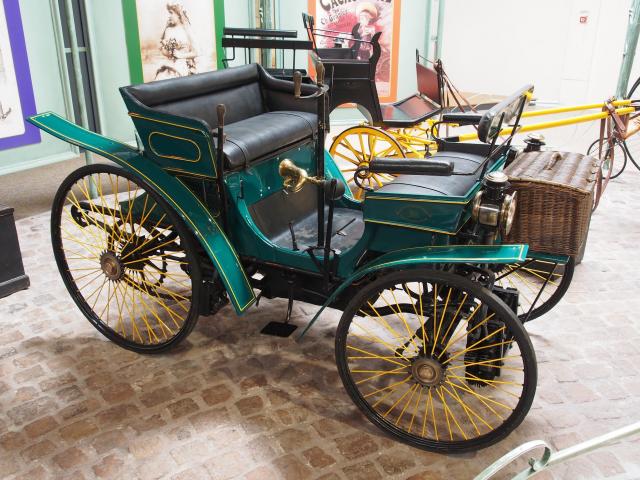1891 Peugeot Type 3
- Brand: Peugeot
1891 Peugeot Type 3
Background
The earliest Peugeot models from 1889 were steam-powered tricycles, built in collaboration with Léon Serpollet. In 1890, Armand Peugeot met with car technology innovators Gottlieb Daimler and Émile Levassor and became convinced that reliable, practical, lightweight vehicles would have to be powered by petrol and have four wheels. The Type 2 was the first such model. Peugeot's one-time partner, Serpollet, continued with steam technology under the brand name Gardner-Serpollet until Serpollet's death in 1907.
Performance
The engine was a German design by Daimler but was licensed for production in France by Panhard et Levassor and then sold to Peugeot. It was a 15° V-twin and produced 2 bhp, sufficient for a top speed of approximately 18 kilometres per hour (11 mph).
Italian production
Beginning in 1894 Costruzioni Meccaniche di Saronno began assembling Peugeot Type 3 cars, it was produced under a Peugeot license.
World record
Armand Peugeot decided to show the quality of the Type 3 by running a demonstration model alongside the cyclists in the inaugural Paris–Brest–Paris cycle race in September 1891, thus gaining official confirmation of progress from the race marshals and time-keepers. His chief engineer Louis Rigoulot and rising workshop foreman Auguste Doriot proved the robustness of the design, as this demonstration car ran for 2,045 kilometres (1,271 miles), from Peugeot's factory in Valentigney to Paris, over the race course, and then back to Valentigney, at an average speed of 14.7 km/h (9.1 mph), without major malfunctions. This was the longest run to that time by a petrol-powered vehicle and about four times as far as the previous record set by Léon Serpollet from Paris to Lyon. Later the demonstrator became the first Peugeot sold to the public.
A lightened Type 3 was entered into the Paris–Bordeaux–Paris race in June 1895, finishing second and maintaining an average speed of 21.7 kilometres per hour (13.5 mph).
Descriptions & pictures by wikipedia & Flicker & Other
| Specification | |
| Production Start | 1891 |
| Production End | 1894 |
| Country of origin | France |



















